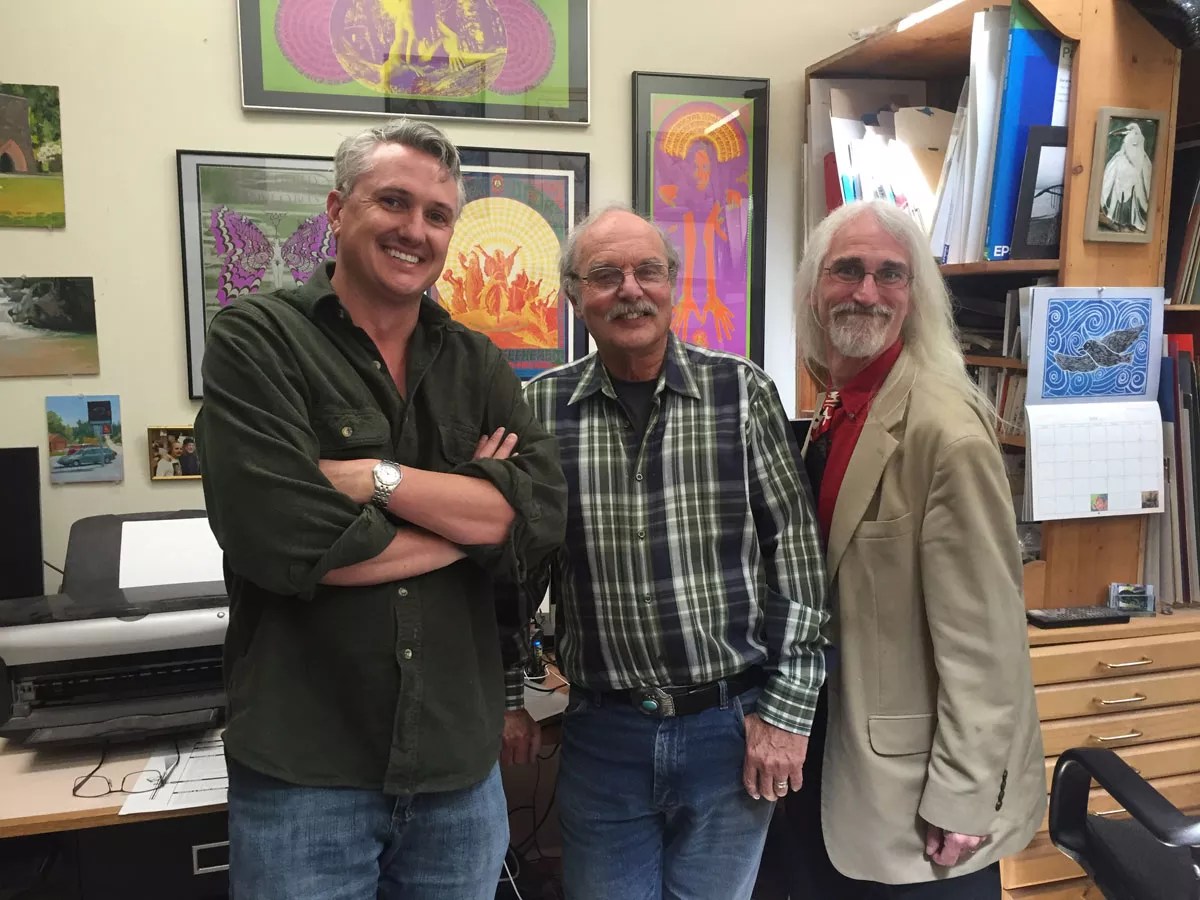
Margaret Joyce

Audio By Carbonatix
Dan Obarski and Scott Montgomery’s documentary The Tale of the Dog, which starts streaming to the public on Tuesday, June 8, tells the previously untold story of the Family Dog rock club in Denver. The music venue, which was only open for ten months in the late 1960s, kickstarted the city’s music scene by bringing in acts like the Doors, the Grateful Dead, Cream, Big Brother and the Holding Company and Jefferson Airplane, while also launching the career of Denver legend Barry Fey, who went on to become one of the country’s biggest promoters, turning Red Rocks into a rock-concert destination.
The film was six years in the making, with Obarski and Montgomery amassing thirty hours of interview footage they eventually cut into a hundred-minute film. Cinedigm Corp recently acquired all U.S. and Canadian rights for The Tale of the Dog, which will be available on Apple/iTunes, Amazon, Google Play/YouTube, FandangoNOW, Vudu and Hoopla.
The doc includes the voices of musicians who played the Family Dog, including Otis Taylor and Paul Conley of Lothar & the Hand People, as well as venue employees; renowned artists Stanley Mouse, Victor Moscoso and Raphael Schnepf, who made psychedelic posters for the venue; Marc Arno of the pioneering light crew Diogenes Lantern Works; Twist & Shout owner Paul Epstein; and others.
When Obarski first met Montgomery, a University of Denver art-history professor who had curated an exhibit of Family Dog posters at the Byers-Evers House Museum in 2015, they both lamented the fact that there wasn’t much information available on the hippie rock club at 1601 West Evans Avenue that was a cultural hub in 1967 and ’68.
As an academic, Montgomery says he first thought a book on the Family Dog would be a good approach. “But in our conversation, it became much more apparent between us that a film would be a better idea because we can capture oral history,” Montgomery says. “There’s nothing out there. We needed interviews, and it just seemed like a more interesting way to tell the story.”
Obarski says it was amazing that the story had never been told.
“We just happen to be, as the universe unrolled, the right people at the right time to tell the story,” he says. “It’s totally improbable that it would have been us.”
Improbable as it was, Montgomery and Obarski forged on with the project. They raised funding from friends and family, sponsors and the University of Denver. And they encountered challenges along the way. They recall one in particular: driving around Los Angeles, trying to find a camera to shoot footage of Canned Heat bassist Larry Taylor, drummer Adolfo “Fito” de la Parra and manager Skip Taylor, as a torrential downpour was causing sinkholes to swallow other cars.
Those interviews with Canned Heat led to one of the more compelling parts of the Family Dog story. The bandmembers, who were slated to play two nights at the venue but got busted for marijuana possession, were allegedly set up by the cops. They needed $10,000 to make bail and ended up having to give up half of their publishing earnings in order to do so. The band would later write about the incident in the song “My Crime.”
“They couldn’t bust the place,” state the lyrics of the song. “And so they got the band / ‘Cause the police in Denver / No, they don’t want none of them longhairs hanging around /And that’s the reason why / They want to tear Canned Heat’s reputation down.”
As the lyrics suggest, the Denver police at the time weren’t too fond of hippies. Detective John Gray, a former Marine, says in The Tale of the Dog that hippies weren’t good for the community and a bad influence on the youth.
Though the hippie-versus-cop narrative is part of the story, Obarski says there isn’t a “clear bad guy” in the film. Both Gray and former Denver Police captain Jerry Kennedy share their take on the club.
“We’ll let the audience kind of decide for themselves,” Obarski says.
While the police might have been trying to shut down the venue, Chet Helms, who lived in San Francisco and had founded Family Productions in 1966, his right-hand man, Bob Cohen, and Fey kept it open until Helms and Cohen backed out at the end of 1967 with the Doors playing a two-night New Year’s stint. Fey, who had first met the two when he flew to San Francisco with the band Eighth Penny Matter, reopened the venue as the Dog until it finally closed in July 1968.
Obarski says one could make the case that Red Rocks Amphitheatre is Denver’s most important venue, but he posits that there’s a clear case that “Red Rocks doesn’t happen without the Dog.” Despite all that history, the West Evans venue is now the home of PT’s Showclub.
For more information, visit the Tale of the Dog website.